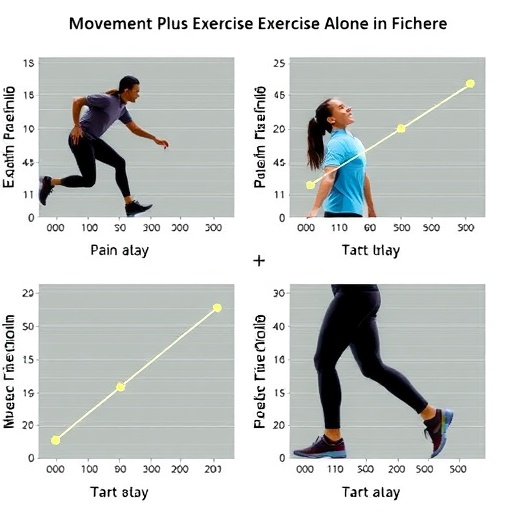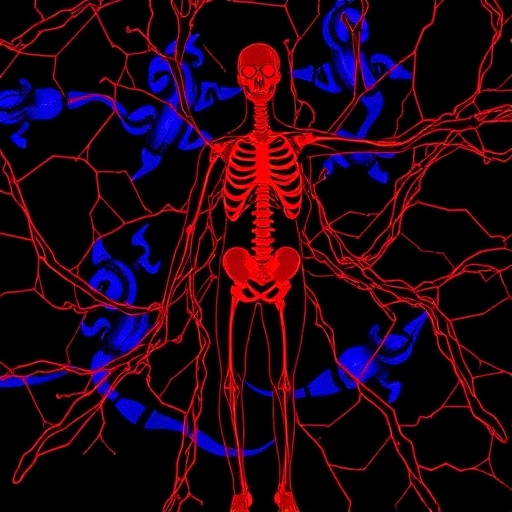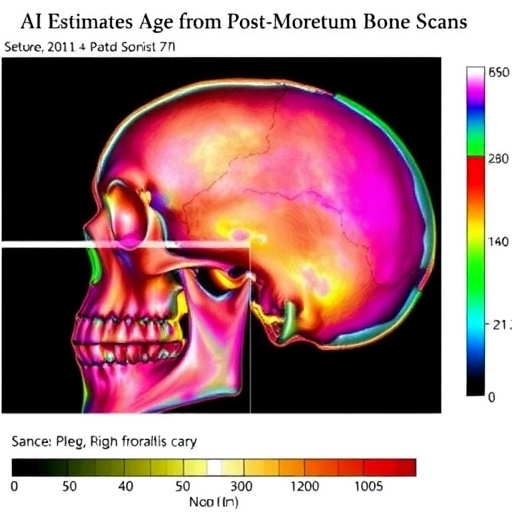
In a remarkable development in the field of pain management, research conducted by Deniz and Kelle has unveiled significant insights into the effectiveness of mobilization with movement plus exercise for patients suffering from chronic subacromial pain syndrome (CS). This condition, often associated with central sensitization, poses unique challenges for both patients and healthcare professionals, as it can lead to debilitating pain and discomfort that severely impacts daily activities.
The study, a sham-controlled randomized clinical trial, embarked on differentiating between two rehabilitation strategies: mobilization with movement plus exercise and exercise alone. The need for such a comparative analysis arises from the complexity of chronic pain syndromes and the necessity for effective treatment modalities. By understanding how various rehabilitation techniques impact pain management, especially in a condition like chronic subacromial pain, the researchers aimed to provide clarity on treatment choices.
Central sensitization is a phenomenon where the central nervous system becomes highly reactive to both external stimuli and internal signals of pain. This heightened sensitivity can turn ordinary sensations into chronic pain, complicating the treatment landscape for affected individuals. Traditional approaches often fall short, necessitating a more nuanced understanding of patient-specific responses to different interventions.
Mobilization with movement entails a combination of hands-on therapy and active exercise, where therapists first work to restore joint mobility through manipulation before integrating specific exercises tailored to the patient’s needs. This approach is predicated on the hypothesis that improving joint mechanics can alleviate pain through enhanced mobility and strength. In contrast, exercise alone focuses solely on physical activity without the preparatory hands-on therapy.
The researchers meticulously designed the study to investigate the outcomes following intervention across a controlled group of participants. The goal was not only to measure pain reduction but also to assess improvements in functional outcomes, which are crucial for patients seeking to reclaim their active lives. This multifaceted perspective on outcomes enriches the potential implications of the study, especially for those who have not responded positively to traditional rehabilitation methods.
Using validated assessment tools, the study scrutinized the participants’ pain levels, range of motion, and overall functional capacity. While both treatment modalities were anticipated to yield positive results, earlier anecdotal evidence hinted that mobilization with movement could potentially offer superior outcomes by addressing both the physical and psychological components of chronic pain syndromes.
The clinical trial, slated for publication in the peer-reviewed journal BMC Complementary Medicine and Therapies, holds promise for practitioners navigating the complexities of chronic pain treatment. As the healthcare community seeks evidence-based practices, findings from this study could pave the way for a more integrative approach to therapy. These insights become increasingly valuable against the backdrop of evolving pain management strategies in an era where personalized medicine is gaining traction.
Interestingly, as the trial progressed, researchers noted varying levels of engagement and motivation among participants. It became evident that psychological factors such as belief in treatment efficacy, prior experiences with pain management, and personal goals played significant roles in shaping outcomes. Thus, the interplay between mental state and physical therapy interventions emerged as an essential consideration in treatment choices for chronic pain conditions.
Ultimately, the results of this clinical trial are anticipated to contribute to the growing body of literature regarding therapeutic options for subacromial pain syndrome. Understanding the different dimensions of patient experience, especially the psychosocial aspects, could lead to more holistic treatment plans tailored to the individual chronic pain sufferer. Such personalized therapies are not only more likely to yield recovery but also prevent future flare-ups, ensuring sustained improvements in quality of life.
As chronic pain remains one of the most prevalent health issues affecting people around the world, the urgency for effective treatment solutions continues to escalate. Research like that of Deniz and Kelle serves as a beacon of hope for both patients and practitioners. By putting the spotlight on tailored rehabilitation strategies, the healthcare community can unite in its efforts to alleviate the burdens of chronic pain disorders, fostering more effective outcomes in clinical settings.
The findings from this trial are expected to ignite further discussions about standardizing rehabilitation protocols, particularly for conditions where pain is entangled with central nervous system responses. As we grapple with the challenges of chronic pain, evidence such as this underlines the importance of innovative research in redefining traditional treatment boundaries. The results might also spur additional studies, prompting further inquiry into how multifaceted approaches can be integrated into contemporary pain management frameworks.
In conclusion, as healthcare professionals and patients alike await the publication details from this impactful study, the implications of mobilization with movement plus exercise could resonate far beyond the scope of one specific condition. It promises to inspire a new chapter in understanding pain, fostering not only recovery but also empowering individuals to reclaim their lives from the clutches of chronic pain. This research thus stands as a testament to the importance of continuous innovation in the pursuit of effective, patient-centered care.
Subject of Research: Chronic subacromial pain syndrome associated with central sensitization
Article Title: Mobilization with movement plus exercise versus exercise alone for patients with central sensitization associated with chronic subacromial pain syndrome: a sham-controlled randomized clinical trial
Article References:
Deniz, V., Kelle, B. Mobilization with movement plus exercise versus exercise alone for patients with central sensitization associated with chronic subacromial pain syndrome: a sham-controlled randomized clinical trial.
BMC Complement Med Ther 25, 289 (2025). https://doi.org/10.1186/s12906-025-05028-0
Image Credits: AI Generated
DOI: 10.1186/s12906-025-05028-0
Keywords: Chronic pain, subacromial pain syndrome, central sensitization, mobilization with movement, rehabilitation strategies, pain management.
Tags: central sensitization in chronic painchronic pain syndrome managementchronic subacromial pain syndromeeffective treatment modalities for painexercise for pain reliefexercise versus mobilization for painhands-on therapy for pain reliefmobilization with movement therapypain management strategiespatient-specific pain interventionsrandomized clinical trial in pain researchrehabilitation techniques for chronic pain




